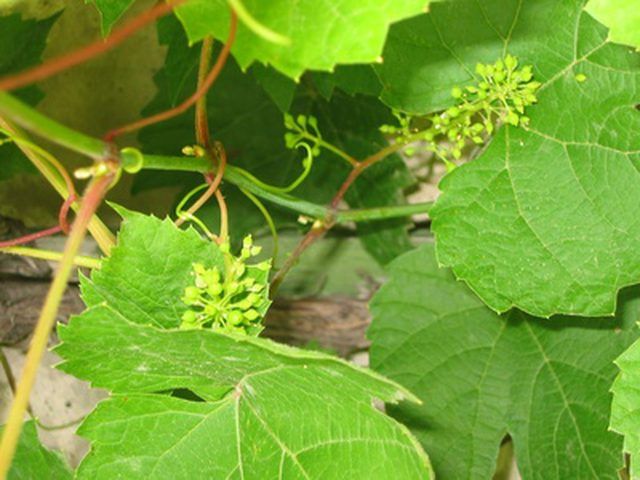Bulbs
Flower Basics
Flower Beds & Specialty Gardens
Flower Garden
Garden Furniture
Garden Gnomes
Garden Seeds
Garden Sheds
Garden Statues
Garden Tools & Supplies
Gardening Basics
Green & Organic
Groundcovers & Vines
Growing Annuals
Growing Basil
Growing Beans
Growing Berries
Growing Blueberries
Growing Cactus
Growing Corn
Growing Cotton
Growing Edibles
Growing Flowers
Growing Garlic
Growing Grapes
Growing Grass
Growing Herbs
Growing Jasmine
Growing Mint
Growing Mushrooms
Orchids
Growing Peanuts
Growing Perennials
Growing Plants
Growing Rosemary
Growing Roses
Growing Strawberries
Growing Sunflowers
Growing Thyme
Growing Tomatoes
Growing Tulips
Growing Vegetables
Herb Basics
Herb Garden
Indoor Growing
Landscaping Basics
Landscaping Patios
Landscaping Plants
Landscaping Shrubs
Landscaping Trees
Landscaping Walks & Pathways
Lawn Basics
Lawn Maintenance
Lawn Mowers
Lawn Ornaments
Lawn Planting
Lawn Tools
Outdoor Growing
Overall Landscape Planning
Pests, Weeds & Problems
Plant Basics
Rock Garden
Rose Garden
Shrubs
Soil
Specialty Gardens
Trees
Vegetable Garden
Yard Maintenance
How to Propagate a Sea Grape Plant
How to Propagate a Sea Grape Plant. Native to South Florida and the West Indies, the sea grape plant grows along sandy shores and dunes producing 8- to 10-inch leaves and globe-shaped fruits that provide habitat and nourishment to the local wildlife. The sea grape plant also produces tiny white flowers that bloom in both the spring and the summer,...

Native to South Florida and the West Indies, the sea grape plant grows along sandy shores and dunes producing 8- to 10-inch leaves and globe-shaped fruits that provide habitat and nourishment to the local wildlife. The sea grape plant also produces tiny white flowers that bloom in both the spring and the summer, making it an attractive landscaping plant for gardeners living in USDA hardiness zones 10a and 11. If you are interested in adding sea grape to your backyard landscape, consider propagating tropical perennial through seed germination and root cuttings.
Things You'll Need
Sea grape seeds
Water
4-inch pots
Sterile potting soil
Spray bottle
Perlite
Sea grape stem
Plant heating pad
Grow light
Seed Germination
Gather seeds from the ripe fruit of the sea grape plant. Remove the edible pulp from the seeds. Rinse the seeds with lukewarm water.
Fill 4-inch pots 3/4 full with sterile potting soil. Press two to three seeds into the soil of each pot at 1/4-inch depth. Pat the soil over top of the seeds to release air pockets.
Mist the soil in the pots with a spray bottle filled with water. Keep the soil moist throughout the germination process, which should take approximately three weeks.
Place the pots in an area that receives bright, indirect light. Maintain a temperature of 75 degrees F or above during germination.
Maintain moist soil and bright, indirect light conditions after the sea grape seeds sprout, and throughout the growing process.
Root Cuttings
Mix a 50-50 ratio of sterile potting soil and perlite in a clean container. Fill a 4-inch pot 3/4 of the way full with the potting mix.
Choose a healthy stem from a mature sea grape plant. Cut a 3- to 4-inch piece from the tip of the stem.
Remove all of the leaves from the stem, except for the two leaves at the very tip. Stick the cutting down halfway into the potting soil, leaf side up. Place the pot in a window that receives bright, indirect light.
Keep the soil in the pot damp at all times while the cutting grows its roots. Root growth should begin to occur in approximately 30 days. New growth will appear shortly after.
Tips & Warnings
Setting the pots on a plant heating pad will help to keep the seeds at the appropriate temperature if you are unable to maintain an environment of 75 degrees F or above during germination. Set up a grow light, which will mimic the sun, if you are unable to provide the cutting or sea grape seedlings with bright, indirect light.
Do not allow the soil to dry out during seed propagation or during the rooting process. Allowing the soil to dry out will prevent seed germination and also dramatically slow down root growth.